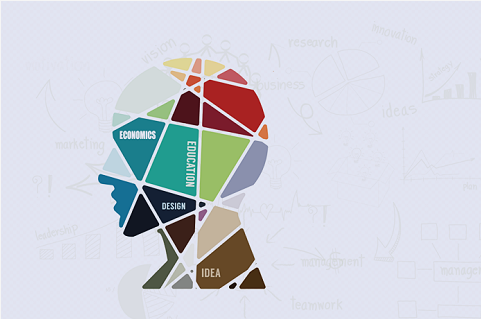Planning can move in more than one direction.
By Jooyoung Park on Quartz
Imagine that you have just received a phone call from a hiring manager at your dream company. She wants to interview you in-person the following week. Upon hanging up the call, you will probably start to form a plan for how to prepare—which is a good thing, as extensive research has shown the importance of planning for goal achievement.
But how should you form this plan? Should you think about what to do first, and then plan out each step you’ll take from there (forward planning)? Or should you form your plan by starting with the last essential step and building a plan in reverse-chronological order (backward planning)?
Research that I conducted with my colleagues at the Korea University Business School and the University of Iowa found that the order in which you plan matters.
How we create plans
You might assume that people generally construct plans in a chronological order, beginning with the thing temporarily closest to the present and ending with the last thing temporarily farthest from the present. But in a survey of 238 Amazon Mechanical Turk workers we conducted during our research, this wasn’t the case.
Respondents of the survey were given a situation for which they needed to create a plan, such as moving to another city, throwing a holiday party, or preparing for a job interview. The respondents were asked to freely list steps they would take to prepare for the given situation and then chronologically ordered the things they had listed. Less than one-fourth of the respondents listed things strictly in chronological order. This implied that people create plans in both chronological and reverse-chronological orders.
Planning backward versus planning forward
Next, my coauthors and I wanted to determine if the order in which people built plans had an impact on their motivation to accomplish a goal and their goal-related performance.
We ran a series of studies where participants created a plan for an important goal, such as an academic goal and a job interview. In one study, for example, students created a study plan for an upcoming final exam in either chronological or reverse-chronological order. After the final exam, we compared their scores and found that students who planned backward indeed performed better in the exam than those who planned forward. This suggests that simply changing the way you create your plan can create different outcomes.
We also found that backward planning is more beneficial than forward planning, especially when the goal requires a complex plan.
Backward planning may be beneficial because it requires people to imagine their hypothetical goal achievement as they begin their planning, which makes them feel close in time to achieving their goals. In our studies, people also tended to perceive that they had a clear view of the steps necessary for their goal achievement when planning backward. That is, when identifying a preceding step after having determined the temporarily farther step, people could clearly see what should be done to complete the temporarily farther step. On the other hand, when planning forward, the temporarily father steps are not contingent on the preceding steps. Thus, people continuously face multiple alternative routes and tasks to carry out. They lose sight of the essential steps and become less confident in their goal achievement.
In sum, because people who plan backward have a clearer view of what needs to be done to reach their goals, they tend to show greater motivation and improved goal-relevant performance compared with people who plan forward.
How to use backward planning
According to our research, backward planning provides the most benefit when applied to plans with complex steps that build upon each other. It might not be necessary for a simple plan, such as grocery shopping, but it could be very useful for our job interview example.
Before you start that hypothetical interview with your dream employer, you may want to take steps such as preparing documents, collecting information about the company, getting your hair and clothes ready, and practicing for the interview. Instead of thinking about which of those actions you can do now, and then getting lost in a number of different routes you might take from there, I’d recommend that you start with the last essential steps and plan backward.
Jooyoung Park is an assistant professor at Peking University HSBC Business School.
















